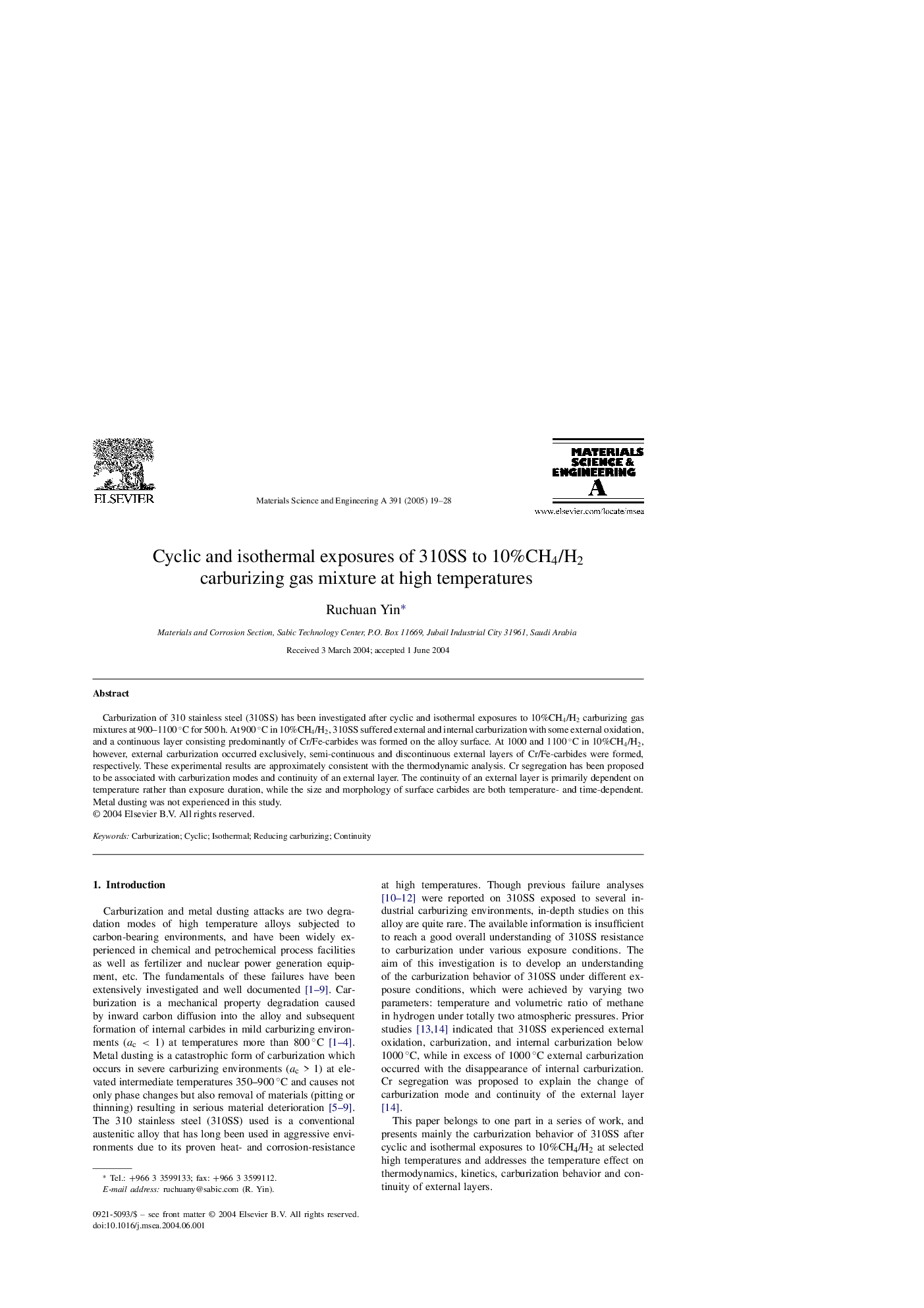| Article ID | Journal | Published Year | Pages | File Type |
|---|---|---|---|---|
| 9796598 | Materials Science and Engineering: A | 2005 | 10 Pages |
Abstract
Carburization of 310 stainless steel (310SS) has been investigated after cyclic and isothermal exposures to 10%CH4/H2 carburizing gas mixtures at 900-1100 °C for 500 h. At 900 °C in 10%CH4/H2, 310SS suffered external and internal carburization with some external oxidation, and a continuous layer consisting predominantly of Cr/Fe-carbides was formed on the alloy surface. At 1000 and 1100 °C in 10%CH4/H2, however, external carburization occurred exclusively, semi-continuous and discontinuous external layers of Cr/Fe-carbides were formed, respectively. These experimental results are approximately consistent with the thermodynamic analysis. Cr segregation has been proposed to be associated with carburization modes and continuity of an external layer. The continuity of an external layer is primarily dependent on temperature rather than exposure duration, while the size and morphology of surface carbides are both temperature- and time-dependent. Metal dusting was not experienced in this study.
Related Topics
Physical Sciences and Engineering
Materials Science
Materials Science (General)
Authors
Ruchuan Yin,
